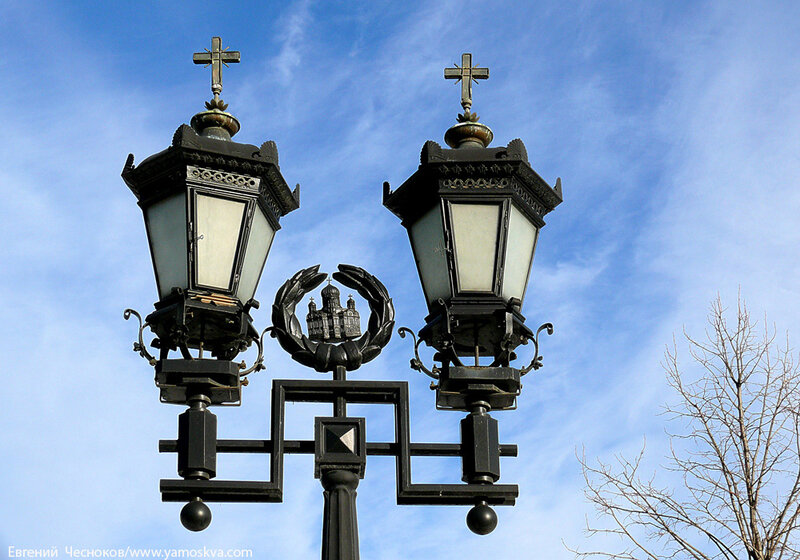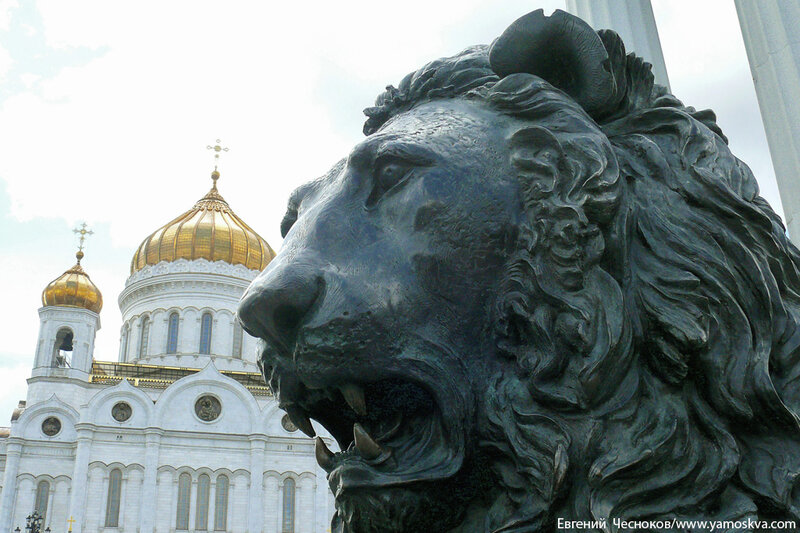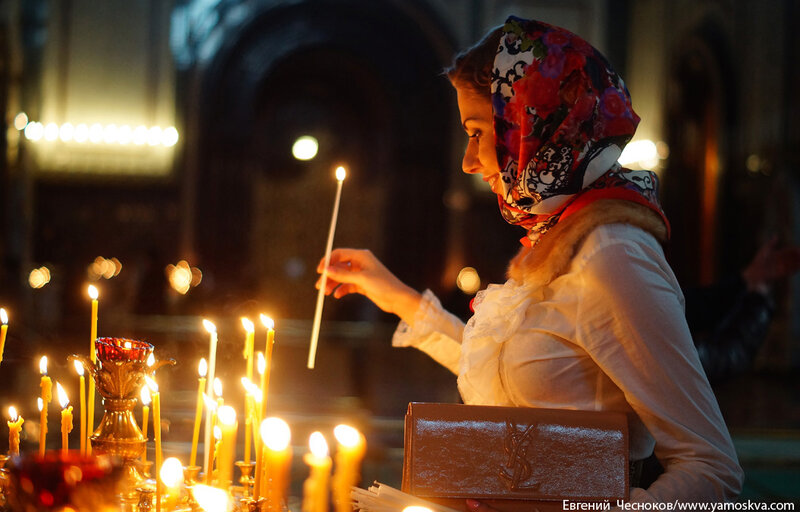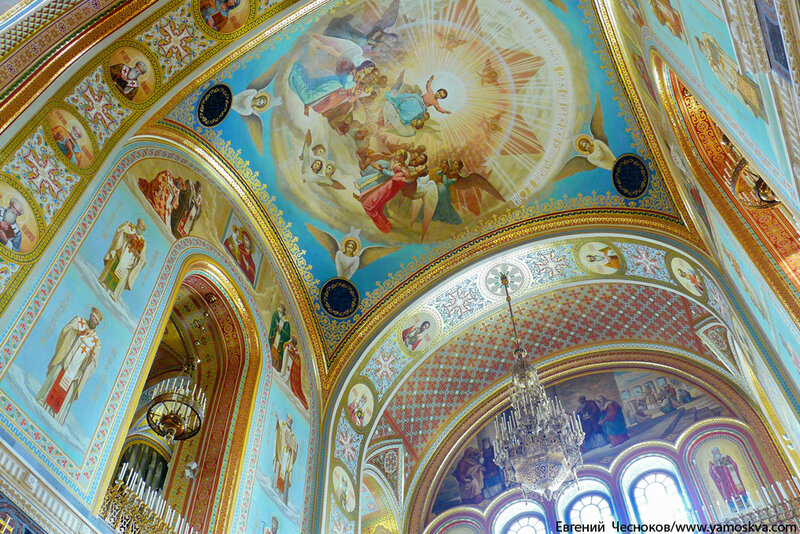Cathedral of Christ the Savior. Part 1, historical - Another Moscow
In Rus', military victories were traditionally celebrated with the laying of churches. In December 1812, the manifesto of Alexander I was published on the creation of a church in the capital city of Moscow in the name of Christ the Savior. In an architectural competition, the project of the artist Witberg won, but he did not turn out to be a business executive. The construction of the temple on Sparrow Hills had to be curtailed, and Vitberg himself, accused of embezzlement and negligence, was sent to Vyatka in 1827.
The history of the Cathedral of Christ the Savior began on December 25, 1812, when Emperor Alexander I signed a manifesto on the creation of a church in honor of the victory over Napoleon's army in the name of the Savior Christ. On October 12, 1817, the ceremonial laying of the temple on Sparrow Hills took place. However, soon the construction on this site had to be abandoned - the soil here was fragile due to underground streams. On April 10, 1832, Emperor Nicholas I approved a new project for the temple, drawn up by Konstantin Ton. Nicholas I personally chose a place for the temple.
The Alekseevsky Convent was transferred to Krasnoye Selo near Sokolniki. All the buildings of the monastery were destroyed. According to legend, the abbess of the monastery cursed the destroyers and predicted that not a single building would stand on this site for a long time.
The ceremonial laying of the new temple took place on September 10, 1837. It took almost 40 years to build as a memorial church dedicated to the Patriotic War of 1812. The consecration took place on May 26, 1883, on the day of the coronation of Emperor Alexander III. Work on the construction of the Cathedral of Christ the Savior was carried out on the orders of four Russian emperors - Alexander I, Nicholas I, Alexander II, Alexander III. It could accommodate 10,000 people at the same time. Built in the so-called Russian-Byzantine style, grandiose in scale (height 103.3 m), the building was distinguished by the luxury of its external and internal decoration.
Temple construction. 1852:
Temple consecration. 1883:
Cathedral of Christ the Savior. 1918-1931:
Troubled times began after the revolution. Seizure of church valuables from the temple. 1922-1931:
1931 Dismantling the domes before the explosion of the temple:
The decision to demolish the temple was made according to the plan for the reconstruction of Moscow on June 2, 1931 at a meeting in Molotov's office. The Cathedral of Christ the Savior was destroyed by several explosions on Saturday, December 5, 1931 in 45 minutes. The original high reliefs were saved and taken to the Donskoy Cemetery, where they can still be seen today.
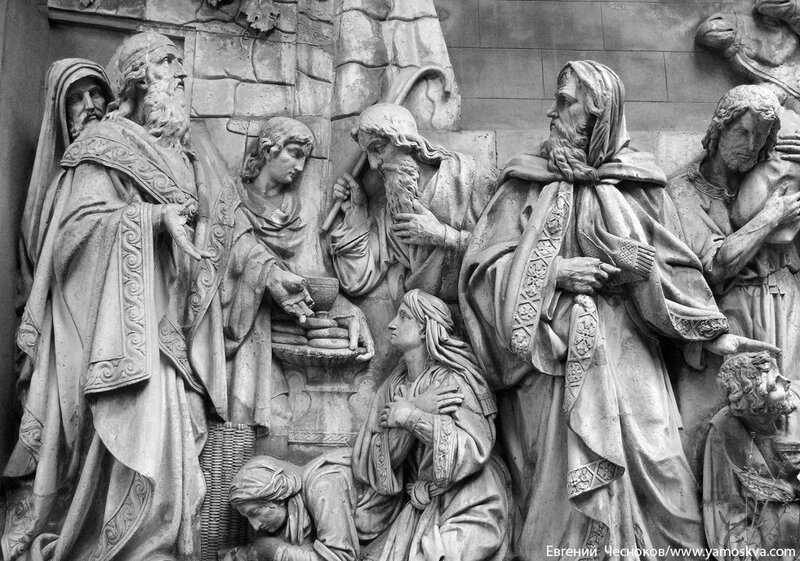
Instead of a temple, they were going to build the greatest building in the history of mankind. But the construction of the Palace of Soviets, begun in 1937, was not destined to be completed - the Great Patriotic War began, and anti-tank hedgehogs for the defense of Moscow were made from metal structures prepared for installation, and soon the building, which had barely risen from the level of the foundation, had to be completely dismantled.
1935-1937:
1938-1940:
According to one of the legends, the foundation pit for the foundation of the Palace of Soviets was flooded with water and therefore a pool had to be made instead of the Palace of Soviets. Swimming pool "Moscow" (architect Dmitry Chechulin) was opened to visitors in July 1960.
According to the pool employee, for all 33 years of the existence of the Moskva pool, the sanitary and epidemiological station has never made a complaint about the quality of the water. Water was not only passed through sand filters, but also chlorinated. The pool was constantly operated by its own laboratory, water sampling was carried out every three hours (and samples were taken weekly by the sanitary and epidemiological station). In the first ten years, bactericidal installations were included in the water treatment cycle, irradiating water with ultraviolet light (PRK-7 mercury-quartz lamps for 1.0 kW). Studies have shown that the water treatment cycle can be carried out without them, while water quality does not suffer.
The pool was part of the city's civil defense system: in the event of a nuclear attack, a washing (disinfecting) point would have functioned here.
From urban legends, one can recall the stories of rescuers who pumped out people - visitors to the pool, who were deliberately drowned by a bearded man, the villain could not be caught.
It is said that the pool was originally planned as a temporary building. The builders saw a mark on the drawings describing the facility as a "temporary structure with a service life of 15 years." The Moskva pool was closed in 1994.
The pool was demolished for economic reasons: after 1991, energy costs skyrocketed. The cost of maintaining the temperature regime in winter was very high. The price of tickets would be unrealistic for the vast majority of Moscow residents. In addition, the deadline for a major overhaul with the replacement of the entire pipeline economy has come up.
According to another version, the water vapor of the pool negatively affected the foundations near the buildings, and this was an additional reason for the demolition of the pool.
Swimming pool "Moscow". 1969:
Demolition of the pool. 1994:
The project of the new temple was made by architects M.M. Posokhin, A.M. Denisov and others. The construction of the new temple was supported by many community groups, but despite this, it was surrounded by controversy, protests and allegations of corruption by the city authorities. The author of the reconstruction project, Denisov, retired from work, giving way to Zurab Tsereteli, who completed the construction, departing from Denisov's original project, approved by the Moscow authorities. Under his leadership, not marble compositions (the originals were preserved in the Donskoy Monastery), but bronze compositions (high reliefs) appeared on the white stone walls, which caused criticism, because they were a clear departure from the original. The painting of the interiors of the temple was carried out by artists recommended by Tsereteli; the cultural value of these murals is also debatable. Instead of the original white stone cladding, the building received marble, and the gilded roof was replaced with a coating based on titanium nitride. It is worth noting that these changes made to the historical project led to a change in the color scheme of the facade from warm to colder. Large sculptural medallions on the facade of the temple were made of polymer material. A two-level underground parking for 305 cars was placed under the temple.
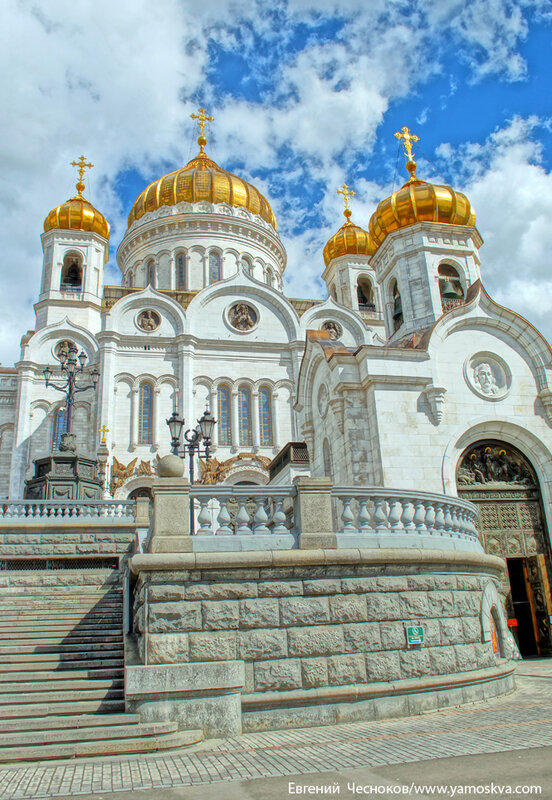
On August 19, 2000, the great consecration of the temple by the cathedral of bishops took place. The structure of the modern complex of the Cathedral of Christ the Savior includes: "Upper Temple" - the actual Cathedral of Christ the Savior. It has three thrones - the main one in honor of the Nativity of Christ and two side ones in the choir stalls - in the name of Nicholas the Wonderworker (southern) and the holy prince Alexander Nevsky (northern). "Lower Church" - the Church of the Transfiguration, built in memory of the women's Alekseevsky monastery located on this site. It has three altars: the main one - in honor of the Transfiguration of the Lord and two small chapels - in honor of Alexy the Man of God and the Tikhvin Icon of the Mother of God. The stylobate part houses the Museum of the Temple, the hall of the Church Councils, the hall of the Supreme Church Council, refectory chambers, as well as technical and office premises.
The land and buildings of the complex of the Cathedral of Christ the Savior belong to the city of Moscow. On March 14, 2004, at a meeting of the Public Supervisory Council for the Restoration of the Cathedral of Christ the Savior, it was announced that the temple had been transferred to the Russian Orthodox Church for unlimited free use; The Board of Trustees of the Cathedral of Christ the Savior was created. In church-administrative terms, the Temple has the status of a courtyard of the Patriarch of Moscow and All Rus'.



